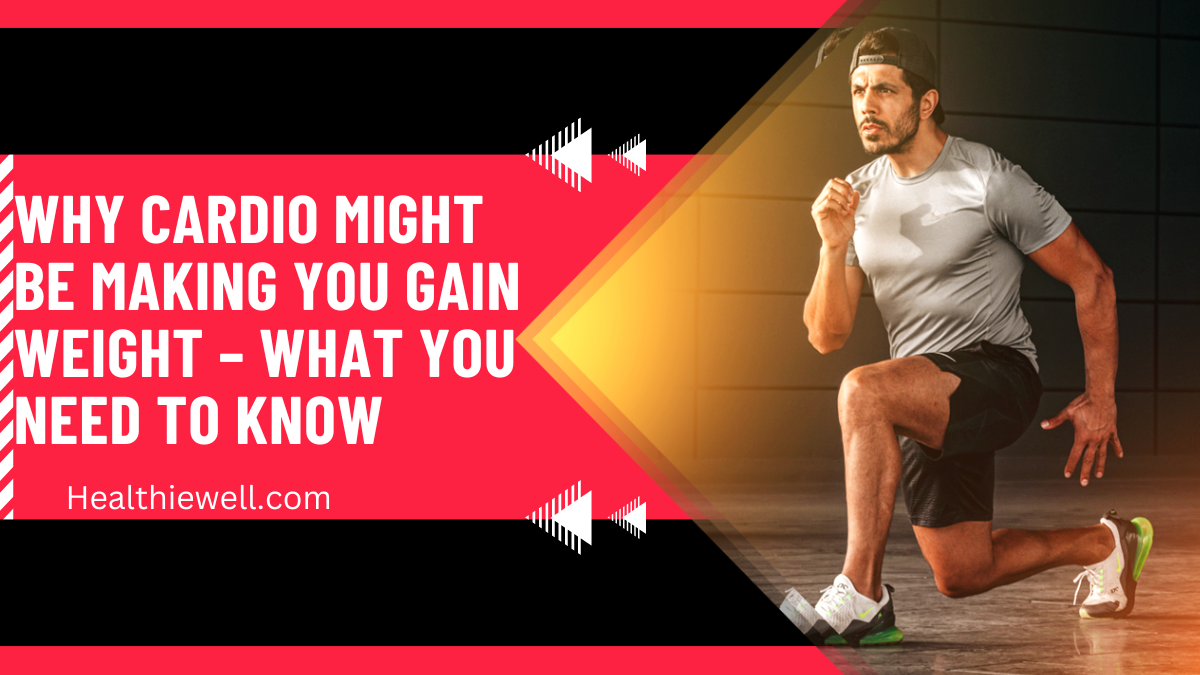Cardio is often hailed as the ultimate solution for weight loss. The idea of running off those extra pounds or cycling your way to a slimmer physique is ingrained in many fitness routines. But what if I told you that cardio might actually be making you gain weight? Sounds contradictory, right? Well, let’s dive into the nitty-gritty and uncover why this might be happening.
Understanding Cardio
First things first, what exactly is cardio? Cardio, short for cardiovascular exercise, involves any activity that raises your heart rate. This includes running, cycling, swimming, and even brisk walking. The primary goal of cardio is to improve heart and lung health, but it’s also widely recognized for burning calories and aiding in weight loss.
The Science Behind Cardio and Weight Gain
The relationship between cardio and weight gain can be quite complex. Several factors contribute to this phenomenon, including metabolic adaptation, hormonal responses, and increased appetite.
Metabolic Adaptation
When you engage in regular cardio, your body becomes more efficient at performing the exercise. While this is great for endurance, it can lead to a decrease in your resting metabolic rate (RMR). Essentially, your body burns fewer calories at rest, making it harder to maintain a calorie deficit, which is crucial for weight loss.
Hormonal Responses
Cardio can significantly impact your hormones. One of the key players here is cortisol, the stress hormone. Extended periods of cardio can increase cortisol levels, which may lead to fat storage, especially around the belly. Additionally, insulin, the hormone responsible for regulating blood sugar, can become less effective, leading to more fat storage.
Impact on Appetite
Have you ever noticed how hungry you feel after a long run? Cardio can increase your appetite, making you more likely to overeat. This increase in hunger can be attributed to the body’s effort to replenish the calories burned during exercise, often leading to consuming more than you actually need.
The Role of Diet
No matter how much cardio you do, your diet plays a pivotal role in your weight management journey. If you’re consuming more calories than you’re burning, weight gain is inevitable. It’s crucial to maintain a balanced diet that aligns with your fitness goals, ensuring you’re fueling your body adequately without overeating.
Types of Cardio and Their Effects
Not all cardio is created equal. The type of cardio you engage in can have different effects on your body and weight management.
Steady-State Cardio
Steady-state cardio involves maintaining a constant, moderate intensity over a period of time, such as jogging or cycling at a consistent pace. While it’s effective for building endurance, it can lead to the aforementioned metabolic adaptations and may not be as effective for weight loss in the long run.
High-Intensity Interval Training (HIIT)
HIIT, on the other hand, involves short bursts of intense activity followed by brief periods of rest. This type of workout can be more effective for burning calories and improving metabolic rate. However, it’s also more demanding and can increase cortisol levels if done excessively.
Balancing Cardio and Strength Training
Incorporating strength training into your routine can be a game-changer. Strength training helps build muscle, which in turn increases your resting metabolic rate. This means you’ll burn more calories even when you’re not working out. Combining cardio and strength training can provide a balanced approach, promoting overall fitness and effective weight management.
Listening to Your Body
It’s essential to pay attention to your body’s signals. Overtraining can lead to burnout, injury, and increased cortisol levels, all of which can hinder your weight loss goals. Ensure you’re getting enough rest and recovery, and adjust your workouts based on how your body feels.
Tips for Effective Cardio
To make the most of your cardio workouts, set realistic goals and monitor your progress. Consider using fitness trackers or apps to keep an eye on your performance and adjust your routine as needed. Remember, consistency is key, but so is variety – mix up your workouts to keep your body guessing and avoid plateaus.
Real-Life Success Stories
Hearing from others who have successfully balanced cardio and weight management can be incredibly motivating. Take Sarah, for example, who incorporated HIIT and strength training into her routine and saw remarkable changes. Or John, who focused on steady-state cardio and mindful eating, achieving a healthier weight without feeling deprived.
Conclusion
In conclusion, while cardio is an excellent tool for improving cardiovascular health and burning calories, it might not always be the magic solution for weight loss. Understanding how your body responds to different types of exercise and balancing cardio with strength training can make a significant difference. Listen to your body, fuel it properly, and find a routine that works for you. Remember, the journey to weight management is unique for everyone, and it’s all about finding what fits your lifestyle and goals.

